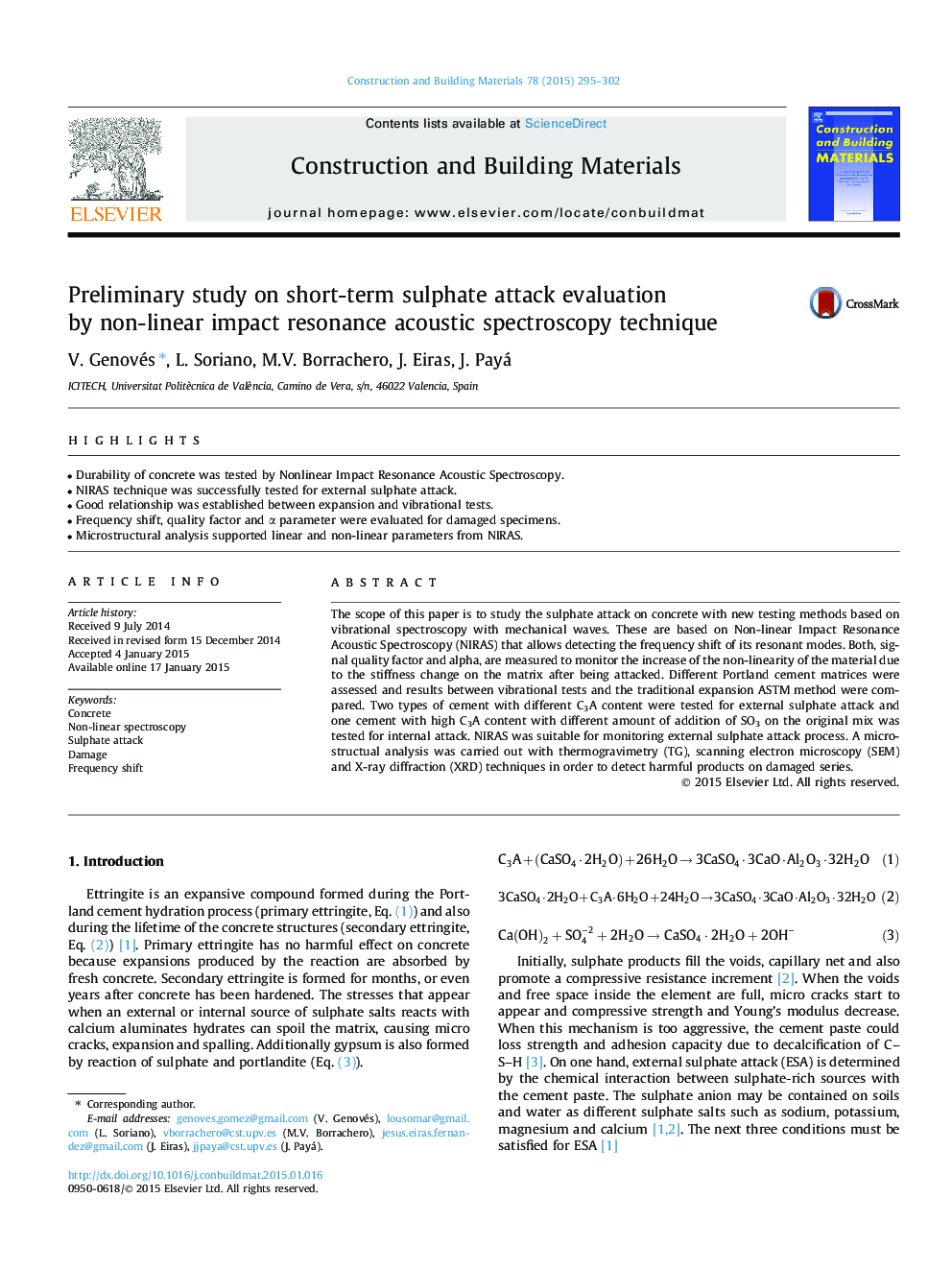| Article ID | Journal | Published Year | Pages | File Type |
|---|---|---|---|---|
| 257116 | Construction and Building Materials | 2015 | 8 Pages |
•Durability of concrete was tested by Nonlinear Impact Resonance Acoustic Spectroscopy.•NIRAS technique was successfully tested for external sulphate attack.•Good relationship was established between expansion and vibrational tests.•Frequency shift, quality factor and α parameter were evaluated for damaged specimens.•Microstructural analysis supported linear and non-linear parameters from NIRAS.
The scope of this paper is to study the sulphate attack on concrete with new testing methods based on vibrational spectroscopy with mechanical waves. These are based on Non-linear Impact Resonance Acoustic Spectroscopy (NIRAS) that allows detecting the frequency shift of its resonant modes. Both, signal quality factor and alpha, are measured to monitor the increase of the non-linearity of the material due to the stiffness change on the matrix after being attacked. Different Portland cement matrices were assessed and results between vibrational tests and the traditional expansion ASTM method were compared. Two types of cement with different C3A content were tested for external sulphate attack and one cement with high C3A content with different amount of addition of SO3 on the original mix was tested for internal attack. NIRAS was suitable for monitoring external sulphate attack process. A microstructual analysis was carried out with thermogravimetry (TG), scanning electron microscopy (SEM) and X-ray diffraction (XRD) techniques in order to detect harmful products on damaged series.
